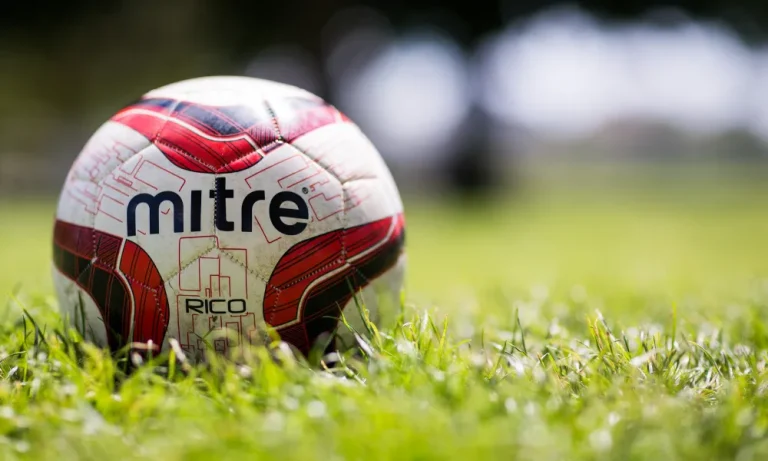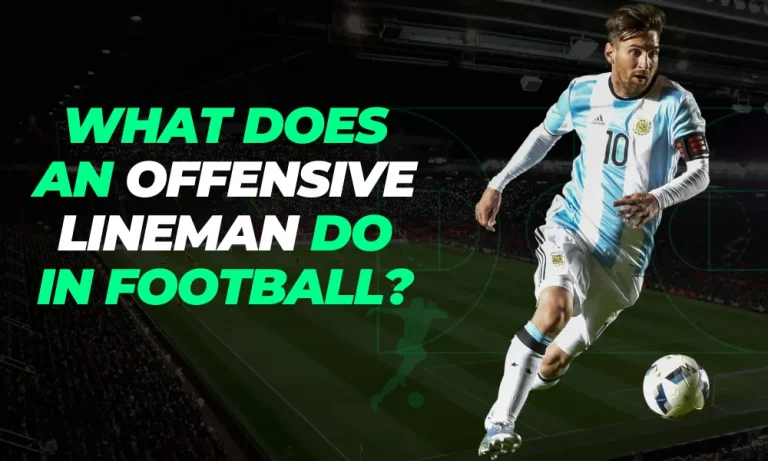Why Do Football Coaches Wear Headsets? Unveiling the Mystery
Football coaches wearing headsets during games has become a common sight, but have you ever wondered why they do it? In this blog post, we will unravel the mystery behind this intriguing practice.
From enhancing communication to gaining a tactical advantage, the use of headsets in football coaching has revolutionized the way the game is strategized and played. So, let’s dive in and explore the fascinating world of football coaching and the role of headsets!
Historical Perspective: Evolution of Coaching Communication
In the early days of football, coaches relied on basic hand signals and shouts from the sidelines to communicate with their players.
However, as the game evolved, so did the need for more efficient and effective means of communication. This led to the introduction of headsets, which revolutionized coaching strategies and brought about a new era of real-time communication on the field.
The use of headsets in football coaching has significantly transformed the way coaches interact with their players during games. Instead of relying solely on shouts and physical gestures, coaches can now communicate instantly and discreetly with their staff and players through the use of wireless headsets.
The adoption of headsets by football coaches has witnessed several key milestones over the years. One significant milestone was the introduction of wired headsets in the 1980s, which allowed coaches to communicate directly with their quarterbacks.
This innovation provided coaches with the ability to relay play calls and make necessary adjustments without having to rely on intermediaries.
Another milestone in the evolution of coaching communication came with the advent of wireless headsets in the 1990s.
This advancement eliminated the restrictions posed by wires and enabled coaches to communicate with multiple players and staff members simultaneously, enhancing coordination and efficiency on the field.
In recent years, advancements in headset technology have further improved communication clarity and reduced interference from crowd noise. Noise-canceling features ensure that coaches’ instructions are heard loud and clear, even in the midst of a roaring stadium.
The evolution of coaching communication, from hand signals to headsets, has undoubtedly transformed the way football coaches strategize and adjust plays during games.
The ability to communicate in real-time has given coaches a tactical advantage, allowing them to adapt their strategies swiftly and keep their players informed, ultimately influencing the outcome of the game.
Functional Benefits: Enhancing Communication and Interactions
The use of headsets in football coaching brings a multitude of functional benefits that significantly impact the game. These benefits include real-time communication, tactical advantage, and improved player-coach interactions and feedback.
Real-time communication
With headsets, coaches can communicate with their players and staff members in real-time, eliminating delays and misinterpretations.
This instant communication allows coaches to relay play calls, provide on-the-spot instructions, and make necessary adjustments swiftly. The ability to coordinate and communicate efficiently enhances team performance and minimizes confusion on the field.
Tactical advantage
Headsets provide football coaches with a significant tactical advantage. By wearing headsets, coaches can strategize and adjust plays instantly, based on the unfolding circumstances of the game.
They can analyze the opponent’s tactics, discuss game plans with their staff, and make informed decisions on the go. This real-time decision-making capability gives coaches the upper hand in adapting their strategies to counter the opposition effectively.
Improved player-coach interactions and feedback during gameplay
Headsets facilitate seamless and direct communication between coaches and players during gameplay. Coaches can provide immediate feedback, offer encouragement, or make crucial game-time decisions without disrupting the flow of the game.
This direct line of communication fosters a stronger player-coach relationship, enhances trust, and enables players to execute strategies more effectively.
Technical Aspects: Enabling Seamless Communication
To understand the functionality of headsets in football coaching, it’s essential to explore the technical aspects that make these devices so effective.
Components of a coach’s headset system
A coach’s headset system consists of several key components. Firstly, there’s the headset itself, which is worn by the coach. This headset typically includes a microphone for speaking and earpieces for listening.
The coach’s headset is wirelessly connected to a base station, which serves as the central hub for communication. The base station allows the coach to connect with other headsets worn by staff members or players on the field.
Wireless technology
Headsets utilize wireless technology to establish seamless connections between coaches, staff members, and players. The headsets and base station communicate via radio frequencies, enabling real-time audio transmission.
This wireless connectivity eliminates the need for physical cables and allows coaches to move freely on the sidelines while maintaining communication with their team.
Noise-canceling features and voice clarity for effective communication
One of the critical technical features of coach’s headsets is the incorporation of noise-canceling technology.
The headsets are equipped with microphones that filter out ambient noise, such as crowd cheers or stadium announcements. This noise-canceling feature ensures that coaches’ instructions are heard clearly, even in the midst of a noisy game environment.
Additionally, the headsets are designed to provide optimal voice clarity, ensuring that communication remains crisp and intelligible.
Psychological Impact: Boosting Confidence and Trust
The use of headsets in football coaching not only has functional benefits but also has a profound psychological impact on both coaches and players.
Confidence boost
When coaches wear headsets, it projects an image of authority and control. The presence of headsets on the sidelines gives coaches a sense of confidence and professionalism, which can have a positive impact on their coaching performance.
The ability to communicate instantly and make quick decisions through headsets enhances coaches’ confidence in their own abilities, and this confidence is contagious, spreading to the players on the field.
Impact on player perception and trust in coach’s decisions
Players perceive coaches wearing headsets as more knowledgeable and in control of the game. The use of headsets signals to the players that the coach has access to real-time information and expert advice, leading to increased trust in their decisions.
This trust in the coach’s decisions and strategies fosters a sense of teamwork and cohesion among the players, as they believe in the coach’s ability to guide them to success.
The psychology behind the perceived benefits of wearing headsets
The perceived benefits of wearing headsets in football coaching can be attributed to several psychological factors. The presence of headsets creates a psychological association with professionalism, expertise, and authority.
This association influences both coaches and players, enhancing their confidence, trust, and overall performance. Additionally, the real-time communication facilitated by headsets provides a sense of control and adaptability, leading to a more positive mindset and improved decision-making on the field.
Unique Perspectives: Insights and Controversies
The use of headsets in football coaching has sparked various opinions and controversies within the sports community.
Opinions from football coaches on the importance of headsets
Football coaches have differing opinions on the importance of headsets in their coaching arsenal. Some coaches believe that headsets revolutionize communication, allowing for instant coordination and strategic adjustments.
They emphasize the advantages of real-time feedback and the ability to address issues promptly. On the other hand, some coaches argue that traditional methods of sideline communication, such as hand signals and whiteboards, are equally effective and maintain a sense of simplicity and authenticity.
Examining the controversies surrounding the use of headsets in football
Controversies surrounding the use of headsets in football primarily revolve around potential unfair advantages and concerns about overreliance on technology.
Critics argue that headsets might provide an unfair advantage to teams that can afford high-end communication systems, creating an imbalance in the competition.
Additionally, there are concerns that excessive reliance on headsets may hinder coaches’ ability to read the game and make autonomous decisions, potentially dampening their coaching instincts.
Comparisons with other sports: Do coaches in other sports wear headsets?
While headsets are commonly associated with football coaching, they are not exclusive to the sport. In various team sports, such as basketball, baseball, and hockey, coaches also utilize headsets for communication. However, the extent and frequency of headset usage may vary across sports.
Factors such as the pace of the game, the need for constant communication, and the availability of resources influence whether coaches in other sports commonly wear headsets.
FAQs
1: Why do football coaches wear headsets?
Football coaches wear headsets to improve communication on the sidelines, allowing for instant coordination and strategic adjustments during the game.
2: How do headsets benefit coaches in football coaching?
Headsets provide coaches with real-time feedback, enabling them to address issues promptly and make quick decisions. It enhances their ability to communicate with players and coaching staff more efficiently.
3: Do headsets give football coaches an unfair advantage?
While headsets provide an advantage in terms of communication, their use is not considered unfair. Many teams have access to headsets, and it has become a common tool in football coaching.
4: Can football coaches rely too much on headsets?
There is a concern that excessive reliance on headsets may hinder coaches’ ability to read the game and make autonomous decisions. It is important for coaches to strike a balance between using headsets and relying on their own instincts and experience.
5: Are headsets used only in football coaching?
No, headsets are also used in other team sports like basketball, baseball, and hockey. However, the extent of their usage may vary depending on the sport and its specific communication requirements.
Conclusion
The use of headsets in football coaching provides coaches with a powerful tool to enhance communication, boost confidence, and foster trust among players.
The ability to make real-time adjustments and access expert advice contributes to improved decision-making in the field. Headsets have become a valuable asset for coaches, revolutionizing the way they strategize and guide their teams to victory.






